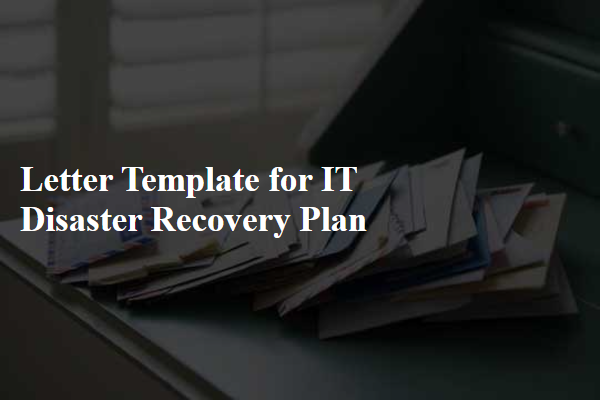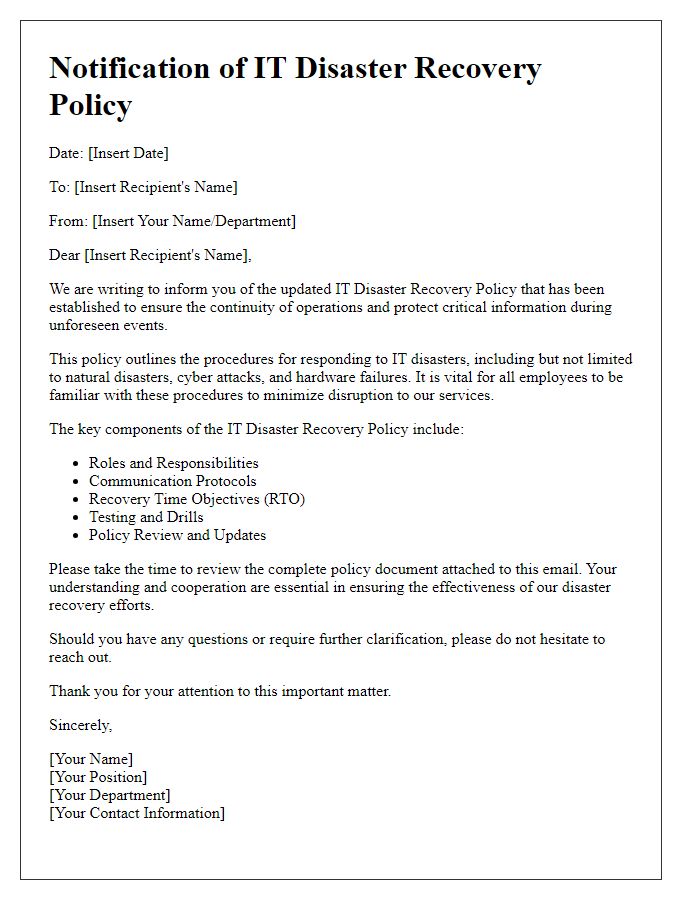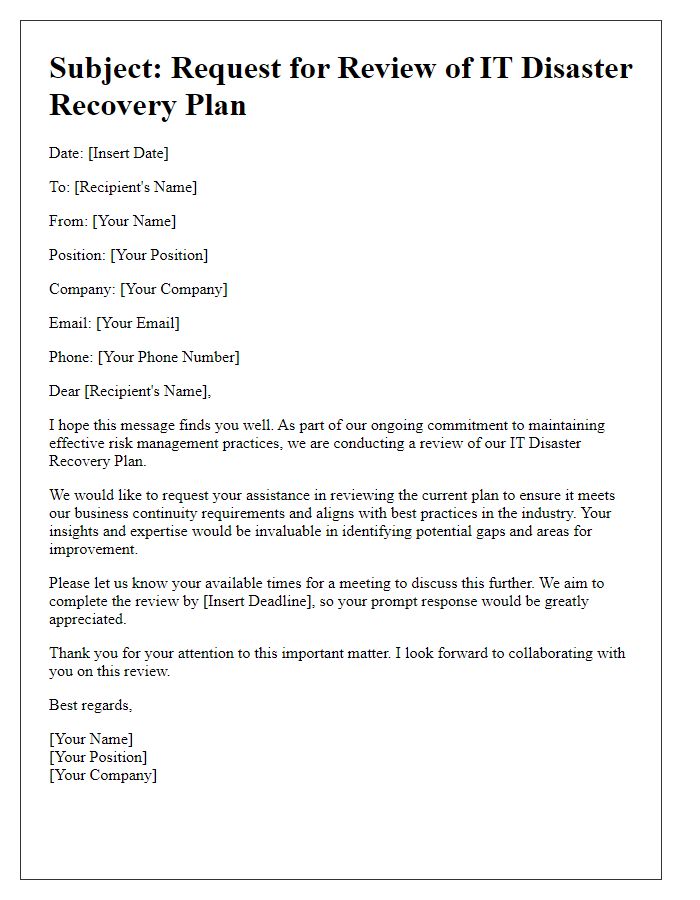In today's fast-paced digital world, having a robust IT disaster recovery plan is crucial for ensuring the continuity of your business. Imagine facing a devastating data loss or unforeseen cyberattackâwithout a solid plan in place, the consequences can be dire. By taking the time to craft a comprehensive disaster recovery letter, you lay the groundwork for a resilient strategy that can safeguard your company's vital information and assets. Ready to dive deeper into the essentials of creating this vital document? Read on to discover useful tips and insights!

Contact Information
An effective IT disaster recovery plan must include comprehensive contact information to ensure swift communication during a crisis. Key individuals such as the Chief Information Officer (CIO) and IT Manager should be clearly listed along with their direct phone numbers and email addresses for quick access. Additionally, including third-party vendors, such as cloud service providers like Amazon Web Services (AWS) or Microsoft Azure, is crucial; their support contact details are vital for recovery operations. Emergency contacts, including local law enforcement, fire department, and key personnel such as facility managers, should be categorized to provide immediate assistance. Finally, consider geographic factors by including contacts for remote teams across various time zones to ensure 24/7 accessibility during the recovery process.
Recovery Objectives
Recovery objectives are crucial components of an IT disaster recovery plan, outlining essential goals for restoring operations following a disruption. The Recovery Time Objective (RTO) defines the maximum acceptable downtime for systems, ensuring business continuity; typically, RTO varies from minutes to hours depending on the critical nature of the application. The Recovery Point Objective (RPO) specifies the maximum acceptable data loss measured in time, often set hourly or daily, guiding backup strategies. Additionally, critical systems such as customer databases or payment processing applications should have prioritized recovery pathways to expedite restoration. Regular testing of recovery strategies is vital to evaluate the effectiveness of established objectives and make necessary improvements to maintain optimal recovery readiness.
Communication Plan
A comprehensive communication plan is crucial in an IT disaster recovery plan, ensuring that all stakeholders are informed and coordinated during a crisis. The plan outlines protocols for notifying employees about the incident, such as outages or breaches, utilizing channels like email notifications, internal messaging platforms (e.g., Slack), and emergency hotlines. Establishing a clear hierarchy for communication is vital; senior management, including the Chief Information Officer (CIO), should be the initial point of contact, followed by IT team leads responsible for specific departments. Timely updates and instructions must be provided to teams, particularly in high-stakes environments such as financial institutions where data integrity is paramount. Regular training exercises should simulate disaster scenarios, fostering familiarity with communication tools and roles, thereby minimizing chaos during real incidents. Additionally, a post-disaster review should gather feedback to enhance future communication strategies, ensuring continuous improvement in disaster response readiness.
Resource Allocation
In the development of an IT disaster recovery plan, resource allocation plays a pivotal role in ensuring the swift restoration of services and data following disruptive incidents. Adequate resources, including personnel, technology, and financial investment, must be designated. An example includes a dedicated recovery team comprising IT specialists, system administrators, and data analysts, ensuring expertise across critical areas of recovery. Technology resources, such as cloud backup solutions (Amazon Web Services or Microsoft Azure) and virtualization software, are essential for data replication and system restoration. Financial allocation needs to consider potential costs associated with downtime, which can reach thousands of dollars per hour for organizations, highlighting the necessity of investing in robust recovery solutions to mitigate these risks effectively. Regular training sessions and simulations, employing frameworks like the National Institute of Standards and Technology (NIST) guidelines, ensure that all team members are prepared and familiar with their roles in the event of a disaster, further optimizing resource usage during critical times.
Testing and Maintenance Schedule
An effective IT disaster recovery plan requires a rigorous and systematic testing and maintenance schedule to ensure business continuity during unexpected disruptions. Key elements include the frequency of tests (quarterly or bi-annually), types of tests (walkthroughs, simulations, and full interruption tests), and participation from relevant stakeholders, including IT teams, management, and third-party vendors. Documentation should include incident response procedures, recovery time objectives (RTO), and recovery point objectives (RPO) to measure compliance against recovery goals. Regular updates (annually) to the disaster recovery plan ensure alignment with evolving technologies and potential threats, while maintaining a continuous improvement cycle that incorporates feedback from each testing exercise. This approach safeguards critical data, minimizes downtime, and enhances organizational resilience against breaches or catastrophic failures.













Comments